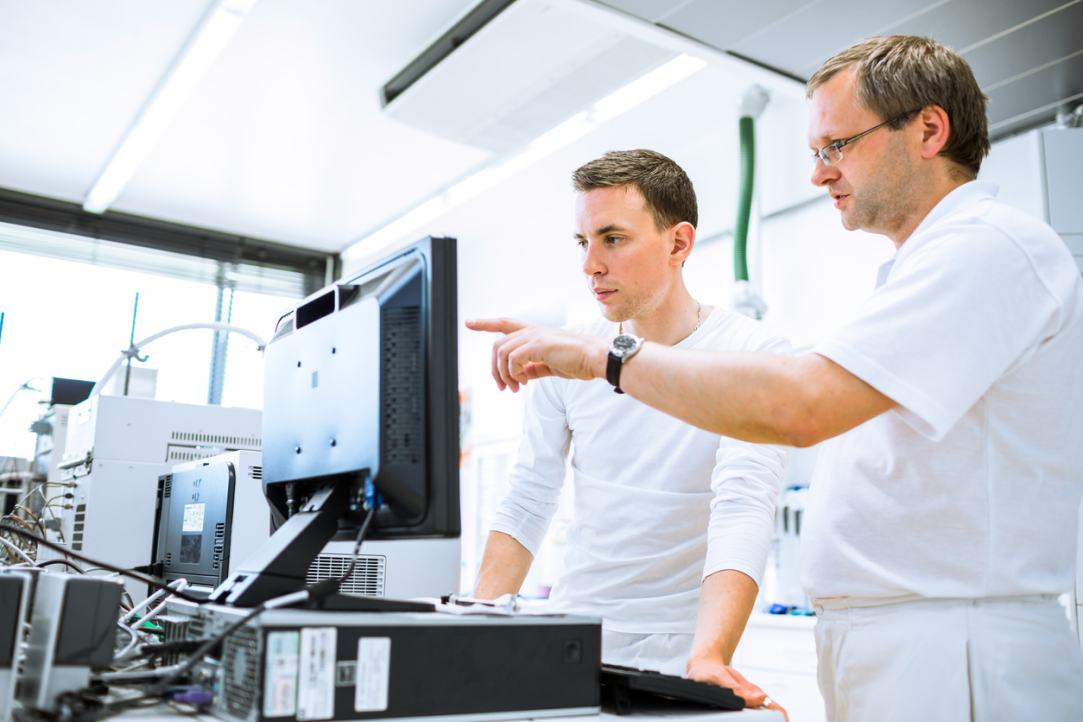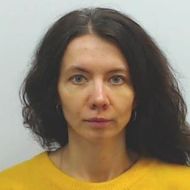'We Can Modify Electron Spins as Required by Applying an External Magnetic Field'

Researchers from HSE, MIPT, and the Russian Academy of Sciences Institute of Solid State Physics, jointly with colleagues from the UK, Switzerland, and China, have conducted a study on the characteristics of thin films composed of platinum and niobium. Both the experiments and the theoretical calculations have confirmed that when in contact with a superconductor, platinum exhibits a spin, creating a potential for its effective use for data transmission. Platinum atoms have no magnetic moment, paving the way for the development of even smaller chips utilising this novel structure compared to conventional spintronics. The paper has been published in Nature Communications.
One of the foremost objectives in contemporary science is the development of a new elemental base for data processing devices. Current semiconductor technologies are nearing their limits, and concerns are growing that the trend described by Moore's Law stating that the number of transistors on a microchip doubles every two years is slowing down and may soon come to a complete halt due to purely physical constraints, as it is impossible to produce a transistor smaller than a single atom. Therefore, new devices will need to rely on alternative physical principles.

Superconducting spintronics presents a promising solution to this challenge. In contrast to electronics, the information carrier here is not an electron's charge but rather its spin, which refers to the orientation of its rotational axis. According to the Pauli Exclusion Principle, two electrons in an atom must have opposite spins: one directed upward, and one directed downward. This makes it possible to associate one with zero and the other with one, enabling the recording of information in binary form. For such devices to function, it is essential to control the orientations of electron spins while minimising heat losses. In superconductors, electrons move without encountering resistance, but they do so in a distinctive manner by forming Cooper pairs. Within a Cooper pair, one electron's spin is oriented upward while the other's is oriented downward, resulting in a net spin of zero, and such a configuration cannot transmit information encoded in the spin. To obtain pairs in which both spins are oriented upwards, conventional approaches involve the use of structures where a thin layer of ferromagnetic material interfaces with the superconductor. However, this approach has its drawbacks, with the primary concern being that the intrinsic magnetic fields within ferromagnetic materials lead to interactions among the computational elements.

Irina Bobkova, Professor at the HSE Faculty of Physics and Head of the Laboratory of Spin Phenomena in Superconducting Nanostructures and Devices at MIPT, explains: 'We opted for an alternative approach to the problem and used platinum instead of ferromagnets. Since platinum has no magnetic moment of its own, we can modify electron spins as required by applying an external magnetic field. The experiments have confirmed our hypothesis.'
The platinum-niobium 'sandwiches' developed by the researchers will make it possible to construct smaller, more compact computing devices. The experiment demonstrated that when a thin layer of platinum interacts with a superconductor, Cooper pairs penetrate into the platinum layer due to the proximity effect. Through the application of a magnetic field, the physicists successfully reoriented the electron spins of these pairs, thus validating the feasibility of information transmission.
The study team includes researchers from MIPT, HSE, the RAS Institute of Solid State Physics (Russia), the University of St Andrews and the Rutherford-Appleton Laboratory (UK), the Paul Scherrer Institute (Switzerland), and Shanghai Jiao Tong University (China).
Irina V. Bobkova
See also:
Russian Scientists Integrate Microdisk Laser and Waveguide on a Single Substrate
A group of Russian scientists led by Professor Natalia Kryzhanovskaya at HSE Campus in St Petersburg has been researching microdisk lasers with an active region based on arsenide quantum dots. For the first time, researchers have successfully developed a microdisk laser coupled with an optical waveguide and a photodetector on a single substrate. This design enables the implementation of a basic photonic circuit on the same substrate as the radiation source (microlaser). In the future, this will help speed up data transfer and reduce equipment weight without compromising quality. The study results have been published in Semiconductors.
First Successful Attempt in 55 years: Physicists in Russia and Germany Confirm 1969 Experiment Results
A team of researchers, with the participation of physicists from HSE University, replicated the 1969 experiment on superconductivity and its properties. The scientists induced superconductivity by deliberately deteriorating the interfaces between the layers of superconductors and ferromagnets in the system, resulting in better performance of spin valves compared to the classical version, where the interfaces between the layers are ideal. This approach could lead to the development of more efficient devices for data storage and computing. The study findings have been published in the Beilstein Journal of Nanotechnology.
Russian Physicists Determine Indices Enabling Prediction of Laser Behaviour
Russian scientists, including researchers at HSE University, examined the features of fibre laser generation and identified universal critical indices for calculating their characteristics and operating regimes. The study findings will help predict and optimise laser parameters for high-speed communication systems, spectroscopy, and other areas of optical technology. The paper has been published in Optics & Laser Technology.
HSE Scientists Have Developed a New Model of Electric Double Layer
This new model accounts for a wide range of ion-electrode interactions and predicts a device's ability to store electric charge. The model's theoretical predictions align with the experimental results. Data on the behaviour of the electric double layer (EDL) can aid in the development of more efficient supercapacitors for portable electronics and electric vehicles. The study has been published in ChemPhysChem.
HSE Scientist Optimises Solution of Hydrodynamics Problems
Roman Gaydukov, Associate Professor at the MIEM HSE School of Applied Mathematics, has modelled the fluid flow around a rotating disk with small surface irregularities. His solution allows for predicting fluid flow behaviour without the need for powerful supercomputers. The results have been published in Russian Journal of Mathematical Physics.
Physicists from Russia and Brazil Unveil Mystery behind Complex Superconductor Patterns
Scientists at HSE MIEM and MIPT have demonstrated that highly complex spatial structures, similar to the intricate patterns found in nature, can emerge in superconductors. Mathematically, these patterns are described using the Ginzburg–Landau equation at a specific combination of parameters known as the Bogomolny point. The paper has been published in the Journal of Physics: Condensed Matter.
Adhesive Tape Helps Create Innovative THz Photodetector
An international team of researchers, including scientists at HSE University and Moscow Pedagogical State University (MPGU), has developed a novel photodetector composed of a thin superconducting film, capable of detecting weak terahertz (THz) radiation. This discovery holds promise for studying objects in space, developing wireless broadband communication systems, and making advancements in spectroscopy. The study has been published in Nano Letters.
Operation of Cellular Networks Found Similar to Bacteria Growth in Petri Dish
Scientists at the HSE Laboratory for Computational Physics have developed a new model for analysing communication networks that can significantly enhance the speed of mobile communications. To achieve this, the researchers used computational physics methods and phase transition models. It turns out that the functioning of cellular networks is in many ways similar to the growth of surfaces in physics. The study was performed using the HPC cHARISMa cluster at HSE University. The study findings have been published in Frontiers in Physics.
The Saudi Arabian National Team, Medal Winners at the International Physics Olympiad, Trained at HSE University
At the recent International Physics Olympiad (IPhO 2024) in Iran, students from Saudi Arabia achieved the best results in their country's history, winning one silver and three bronze medals. The team from the Kingdom made their first visit to Russia to receive their final training at the HSE Faculty of Physics.
'I've Always Been Keen to Engage in Experiments and Operate Scientific Instruments'
During his early years at university, physicist Ivan Makhov worried that he might be dismissed, but today he is heading a study supported by a grant from the Russian Science Foundation. In this interview with the HSE Young Scientists project, he shares his work experience using a closed-loop cryostat, his dream of conversing with Einstein, and favourite location in his hometown of St Petersburg.


